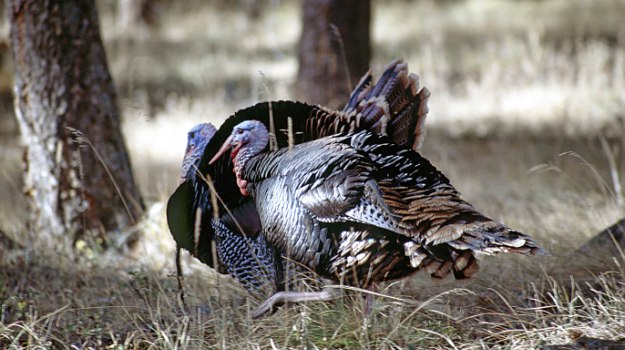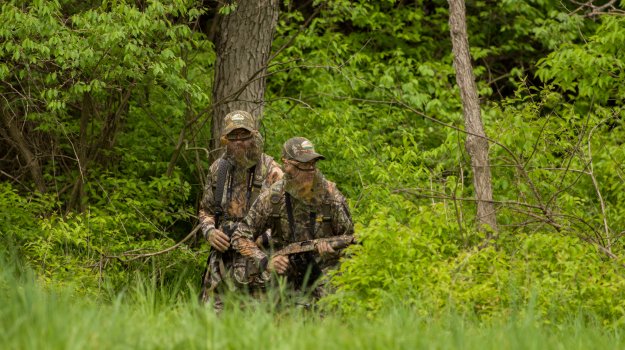
First we’ll look for the best place to set up by taking a stand where we can see and shoot turkeys. The spot we choose to set up is often critically important as to whether or not we’ll bag a tom. I don’t want the turkey to be 100 yards from me and possibly be able to see me or not see the hen he’s heard calling to him. I want to be on the opposite side of a little rise from where I think the turkey is, or I want to be on the other side of a fallen tree from the gobbler, that the turkey can’t see through. For the gobbler to see the hen that’s been calling to him, I want him to have to walk within gun range of me and my hunter.
Now you don’t want to pick a spot to set up that will create a barrier that the turkey doesn’t want to come around to see the hen. For instance, you don’t want to be behind a cane thicket that’s 30-50 yards long or behind a 30-50 yard blackberry patch that will stop the turkey from coming to you. Remember, a turkey’s not that tall, so even a little rise that a turkey has to walk up and over to see the hen and be within gun range is the kind of place you need to set up. But don’t set up too close to the turkey, so that when you see him, he’s only 10 yards from you. You want him to be 30-40 yards from your stand when you first see him. If the turkey’s too close to you, you’ll spook him when you try and take the shot. Another good set-up area is a little curve a tom must come around to see a hen when a turkey’s walking down the top of a ridge. Just make sure that the turkey can’t see you, and you can’t see him until he’s in gun range, or almost in gun range.
Day 2: What Setting Up on Turkeys Means and How To Do It
Tomorrow: How the Hunter Prepares to Shoot When the Turkey’s Closing Ground



























